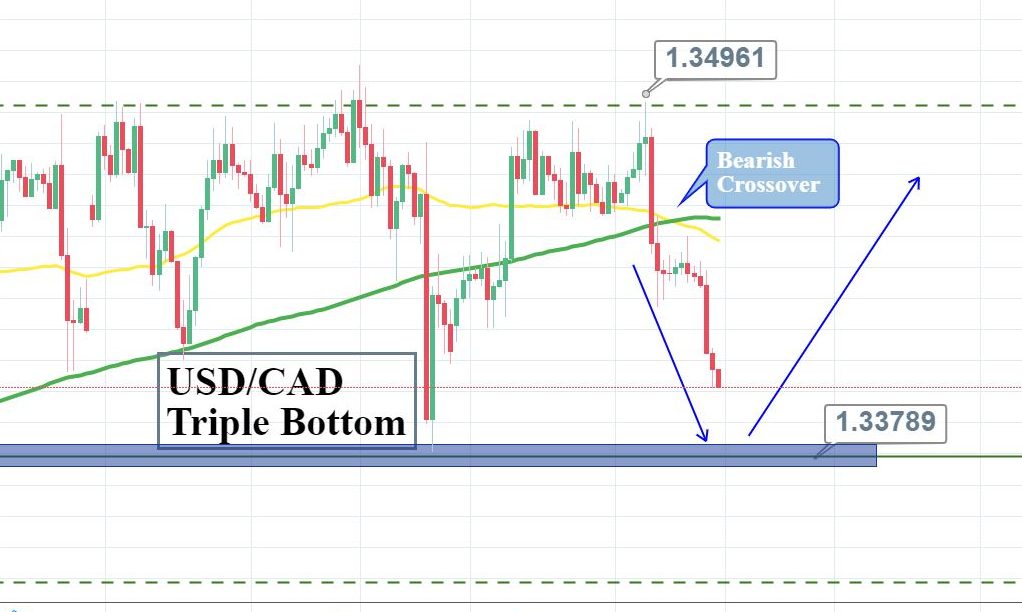How to Effectively Use a Trailing Stop Loss
Luckily, technical analysis enables you to estimate the chances of a security trending up or down in a given timeframe. However, even 90 percent probability trades will statistically fail ten out of one hundred times, and events with extremely low probability take place once in a while. According to Murphy’s Law, “anything that can go wrong will go wrong”. Thus, every event with the slightest probability of happening will eventually happen. Nassim Nicholas Taleb fathered the term “black swan event” to describe unexpected events of large magnitude and consequence and their dominant role in history. This is, of course, essential to recognize for every participant in the financial markets. Traders can protect themselves from such events by placing “stop-loss” orders.
Stop-loss
Stop-loss orders prevent you from being dragged down by unseen events. For example, once you have opened a long position, your stop loss could be placed two percent below your entry price. Consequently, as soon as the price has dropped two percent, you would automatically exit your trade to protect yourself from further downward movement.
Additionally, you can use stop-loss orders to trade the breakout and to drop your trade as soon as it doesn’t go as originally planned. So, without further ado let’s dive right into the most useful stop-loss techniques.
Trailing Stop-loss
Trailing stop-loss orders are an advanced order type of stop-loss orders, which make it possible for you to exit a trade without losses or even profits although you were automatically exited by your stop-loss order. This follows the principle “let your profits run and cut your losses short”. A trailing stop-loss order is basically a stop-loss order which follows the trend of a security and adapts its stop-loss value to the current value of the security. In forex, for example, you could have bought EUR/USD for $1.125 and your trailing stop-loss is $0.025.
This means if the price rises to $1.225, your trailing stop loss is at $1.20 (1.225–0.025). Thus, you would automatically exit the trade as soon as the price drops to $1.20. Consequently, the price of your stop-loss order increases with the price surging higher.
Why is the stop-loss order fundamental in Forex trading?
It enables you to minimize risk and keep your losses as small as possible, although you can still profit from trending markets.
How to implement ‘Cut your losses and let your profits run’?
The best way is, certainly, to look for supports and resistances. In the example below, you can see that the 50-3D-EMA acted as resistance for the past 17 months. The overall trend is bearish. Thus, if you are shorting this currency pair, you could set a stop loss above the 50-3D-EMA or even above the 200-3D-EMA. Once those resistances are bullishly broken, you could assume a trend switch why is why you should exit your short position.

How to come up with a profitable forex trading strategy?
An interesting forex trading strategy which involves stop-loss orders is to trade a breakout with a stop-loss order. In the example below, you could enter a short position by only placing a stop-loss underneath the support level of the rising wedge. Since this pattern is very bearish, you could assume a major drop after a bearish breakout of this pattern. Thus, a break of the wedge support level would indicate further downward movement.

Another strategy would be to short the resistance trendline and to set a stop-loss order above the resistance.
How do I know where to put the stop-loss order?
Usually, traders place it below a support level or above a resistance level, depending on your position; long or short. However, it is all about the risk to reward ratio. The rising wedge pattern, for example, typically moves at least the height of the wedge (measured at the base where the two trendlines start). For example, if the trendlines start at a swing high of $1.05 and a swing low of $0.9, the wedge is $0.105 high at the base. When the price breaks out, expect at least a $0.105 move in the breakout price. Consequently, if your stop-loss order is two percent above your short-entry price, you could lose two percent while you could gain more than ten percent, which is a risk to reward ratio greater than 1:5, which is excellent.
The bottom line
If you are actively day trading, you need to be very cautiously using trailing stops. The forex market tends to move up and down after a breakout before they move in their ultimate direction. If you set your stop loss too tight to your entry price and the price moves up and back, your trailing stop is likely to be executed. So, it’s something that you should use carefully set in place.
Stop-loss orders should protect your capital but setting them too close to the price most likely results in you losing funds since you get stopped out over and over again.
Another strategy to consider is to average your trade price. Therefore, you would make a buy, the price drops and you buy more, and your average price falls somewhere in the middle.
If you aren’t careful about this, it can cause you to accidentally realize a loss, even though your most recent trade is in profit.
To conclude, trailing stops are a great trading tool that enables you to not only protect yourself but also to lock in more and more profit, without watching the market every twenty-four hours.